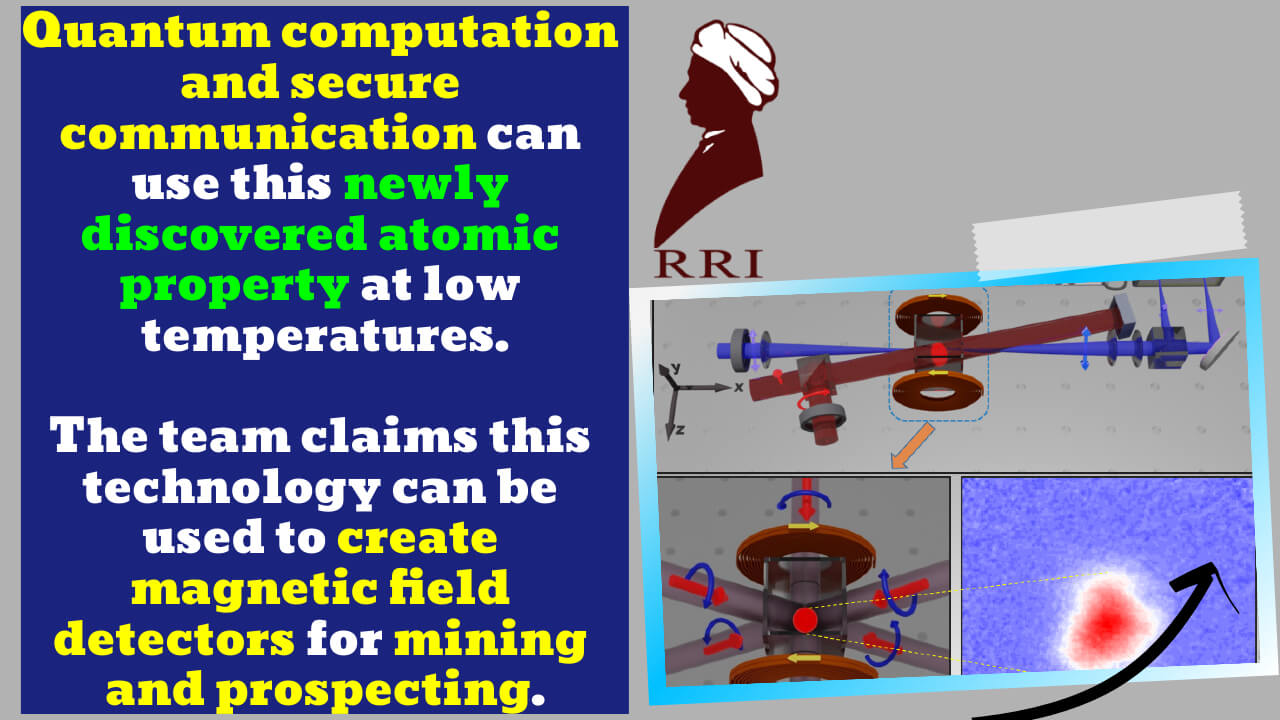Spin is an important quantum property of atoms and elementary particles like electrons and protons. The ability to measure spin at low temperatures can be used to improve quantum sensing and information processing.
The newly discovered technique can aid in the non-invasive investigation of the real-time dynamics of quantum phenomena. They used laser cooling techniques to cool neutral atoms close to absolute zero. The technology can be used to create devices that detect small magnetic fields with pinpoint accuracy.
Key Highlight:
- This newly discovered property of atomic systems at low temperatures can be used for quantum computation and secure communication.
- The new technique improved detection sensitivity by a million fold over existing technology for measuring spin properties and the lifetime of an atomic spin state.
- Spin coherence at low temperatures is long-lived, they found.
- They enabled spectroscopists to use spin noise spectroscopy to measure systems with low signal levels.
- The team claims that this technology can be used to create devices that can detect small magnetic fields, useful in mining and prospecting.
Scientists say that correlations between waves in atomic systems or spin coherences are long-lasting at very low temperatures in a new study. They say they can measure this with a new technique that they’ve come up with. A quantum computer with spin coherences that last a long time is better than one that doesn’t. It allows quantum operations and logic gates to be done more quickly, making the system a better quantum sensor than where coherence is short-lived.
This new property of atomic systems at low temperatures can be used for efficient quantum sensing and quantum information processing, which can be used in quantum computing and secure communication. The new method can help scientists study quantum phenomena like quantum phase transitions in non-invasive ways.
Spin is a fundamental quantum property of atoms and small particles like electrons and protons, like how they move around each other. As the temperature of atoms drops, their quantum nature comes out more. However, even though the spin degree of freedom is a hot topic, especially in quantum information processing, dynamical measurements on spins at shallow temperatures were unavailable. In cold atom experiments, most methods used to find the atoms are destructive and move the atoms around while they are being found.
They used a new method to measure the spin properties of atoms cooled down to micro-Kelvin temperatures. This is an independent research institute run by the Indian government’s Department of Science and Technology. It is the first time that spin dynamics have been detected using polarization fluctuation measurements at this temperature. At this temperature, quantum properties rule over everyday classical observations, which is the first time this has been done.
With the new method, the scientists measured the properties of spins and the lifetime of an atomic spin state with a million-fold increase in detection sensitivity over the old method. That spin coherence lasts a long time at this low temperature is accurate.
Scientists at RRI led this work, which increased the signal strength of spin noise by a million-fold by using a coherent laser drive. It was led by Sanjukta Roy, Dibyendu Roy, Saptarishi Chaudhuri, and Maheswar Swar, two Ph.D. students at RRI. The journal Phys made the spin noise spectroscopy technique work for spectroscopists who need to measure systems where the signal level is too low to see. Rev. Research, the research has been written up about it. DST (Department of Science and Technology) and MeitY (MeitY) have given money to help with the project (Ministry of Electronics and Information Technology).
According to the RRI team, the inspiration for this work came from Nobel Prize winner Sir C V Raman’s seminal work on light scattering. They used laser cooling techniques to bring the neutral atoms down to near-absolute zero temperatures. They then used laser light to drive quantum transitions in these cold atoms and a polarimetric detection method to precisely measure the spin dynamics in these atoms. Finally, they found out how long the spins in cold atoms last. They found that they last for almost a millisecond, which is at least a thousand times longer than the spin life of atoms at room temperature. The RRI team came up with a way to explain what they saw with the help of advanced quantum mechanical ideas.
It’s essential to know about the spin dynamics of the atoms at the single-atom level instead of the bulk properties that can be found with other techniques, the RRI team said, explaining why the new technology is essential.
It can be used to make devices that can detect microscopic magnetic fields, which can be very useful in mining and prospecting. Another important use for the work is in biomedical imaging, where time-resolved measurements of small magnetic fields need to be made.
Publication link: DOI: 10.1103/PhysRevResearch.3.043171
Raman Research Institute scientists find a new way for quantum state estimation that can make crucial quantum operations simpler
— PIB India (@PIB_India) August 31, 2020
Read: https://t.co/p9CfsIU7R9 pic.twitter.com/YdAilTkCxO





[…] Using this newly discovered atomic property at low temperatures can enable… […]